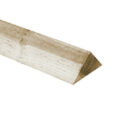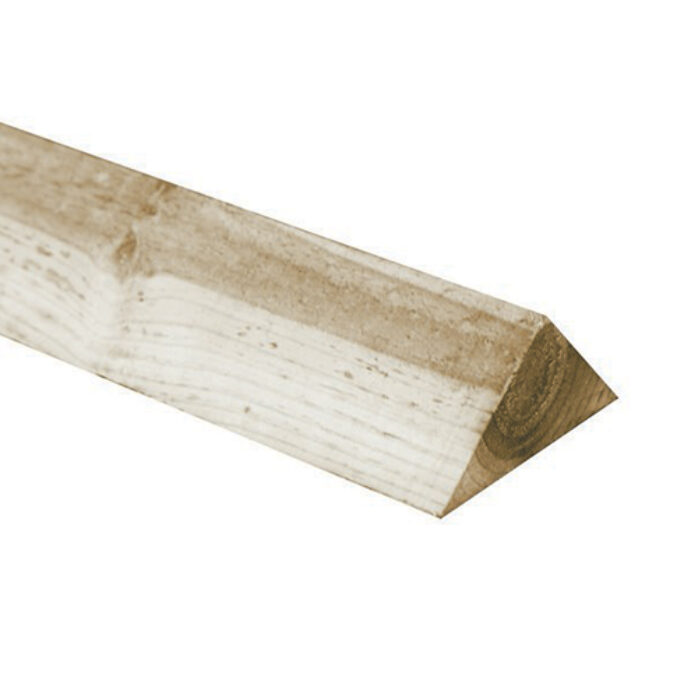While the posts may be like the backbone of a fence, the rails are just as important as these determine the strength and finish of your fence.
Blunt arris rails are typically used with either V-Notch Timber Posts or Arris Rail Brackets on standard Square Sawn Timber posts.
1. Pressure treated to give protection against heavy rain and help prevent wood rot
2. Sourced from mills with up-to-date machinery, giving you the reassurance of quality cut timber for an easier install
3. The triangular shape of the rail directs rainwater run-off away from the feather edge, reducing moisture contact and helping preserve the cladding
To work out how many rails you will need, take the length of your fence run (in metres), divide it by the width of your bay then multiply this by the number of rails per bay.
For closeboard fencing 5? (1.5m) and lower, you will require 2 rails per bay, any taller and you will require 3 rails per bay.
Closeboard is normally installed in 3m bays, so if your fence run was 30m and finishing at 6? (1.8m) high, you would divide 30m by 3 (bay width) which equals 10, then multiply by 3 (number of rails per bay) which totals 30 rails required for the fence run.
If your fence run doesn?t work out to a multiple of 3 (or the bay width you choose), always be sure to round up rather than down so you don?t run out of materials.



Reviews
There are no reviews yet.